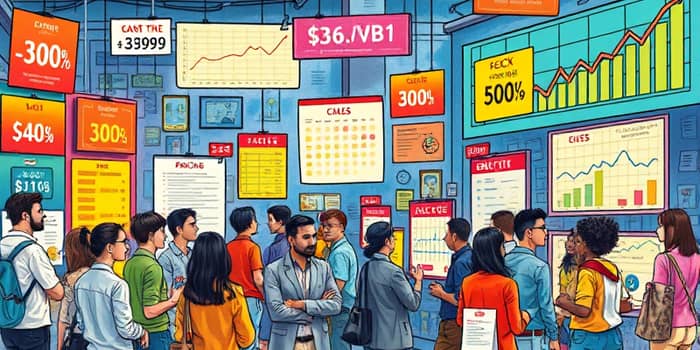Imagine walking into a boutique shop where every price tag seems perfectly tailored to your expectations. You don’t just see prices; you feel them, guided by hidden cues that influence your decisions. That is the power of pricing psychology at work. In today’s competitive landscape, understanding these subtle forces can transform how customers perceive your offerings and dramatically boost both revenue and loyalty.
In this article, we dive deep into the art and science of setting rates that resonate with buyers. You’ll discover proven strategies—from reference pricing to charm pricing—and learn how to implement them ethically. By the end, you’ll possess a clear framework to balance customer perception with profitability goals and craft price points that truly reflect value.
The Science Behind Pricing Decisions
Pricing psychology operates on the principle that buyers rarely act on pure logic. Instead, they rely on mental shortcuts and emotional triggers. These include cognitive biases like the left-digit bias influencing perceptions and the anchoring effect where the first price seen becomes key reference. By understanding these mechanisms, businesses can shape pricing presentations that feel compelling and fair.
Over years of research, experts have identified how factors like context, presentation order, and framing impact spending behavior. What seems like a small change—a price ending in .99 or a bundled offer—can yield outsized results. Your challenge is to harness these insights without compromising trust or alienating discerning customers.
Core Strategies in Practice
Below are the fundamental psychological pricing approaches that top brands use to align rates with perceived value. Each lever can be customized to fit different products, markets, and customer segments.
- Reference Pricing and Anchoring: Present a higher-priced option first to set a benchmark, making subsequent choices appear more affordable and attractive.
- Comparative Pricing with Decoy Effect: Introduce a third, less appealing option to steer customers toward the target mid-tier product.
- Partitioned Pricing vs Free Shipping: Break down costs into components, or offer “free shipping” to capitalize on the allure of “free.”
- Odd-Even (Charm) Pricing: Use prices ending in .99 or .95 to exploit the left-digit bias and convey a better deal.
- Bundle and Tiered Pricing: Package complementary items or services to boost perceived savings and encourage upsells across different tiers.
- Market Segmentation with Discounts: Craft special rates or promotions that resonate with defined customer groups based on their spending habits and values.
Real-World Success Stories
Seeing theory in action illuminates the potential of psychological pricing. Below are three notable examples where businesses tapped into customer psychology and unlocked strong growth.
A gourmet snacks subscription service implemented tiered pricing at $19.99, $29.99, and $39.99. By framing the middle option as the “best value,” they enjoyed a 30% retention boost. An artisan shop swapped $15 for $14.99 tags alongside a visible discount display, driving a 25% spike in holiday sales. And market leader Tesla leverages perceived premium value of innovative technology to command rates that emphasize quality over cost.
Advantages of Psychological Pricing
When deployed thoughtfully, these tactics deliver significant benefits:
- Boost sales and conversion rates through subtle cues.
- Increase retention by reinforcing perceived value with existing customers.
- Enable premium brand positioning on quality and exclusivity.
- Drive targeted segmentation with tailored promotions.
Potential Pitfalls and Ethical Considerations
While powerful, psychological pricing demands responsibility. Misusing these strategies can erode trust or spark regulatory action. Consider these risks before implementing:
- Risk of eroding trust with deceptive discounts or hidden fees.
- Regulatory scrutiny over artificial scarcity or false savings claims.
- Overuse leading to consumer skepticism and reduced effectiveness.
- Brand dilution from inconsistent pricing across channels.
Implementing a Winning Pricing Framework
To harness the full potential of pricing psychology, follow a structured approach. First, audit your existing rate structures and collect customer feedback on price sensitivity. Next, identify the most relevant cognitive biases for your audience—whether anchoring, decoy effects, or charm pricing—and prioritize one or two tactics.
Once chosen, split total cost into smaller parts for transparency or test bundled vs standalone offers. Employ A/B testing to compare responses to different price presentations. Analyze metrics such as conversion rate, average order value, and retention. Continuously iterate based on data and customer insights.
Conclusion
Pricing psychology is as much about customer experience and brand story as it is about raw numbers. By setting rates that reflect true value—grounded in insight into how people think and feel—you’ll forge stronger connections, sustain profitability, and stand out in crowded markets. Embrace these strategies ethically, keep customer trust at the forefront, and watch how even subtle adjustments can unlock remarkable growth.
References
- https://www.paddle.com/blog/psychological-pricing
- https://binarystream.com/boost-recurring-revenue-with-these-7-principles-of-psychological-pricing/
- https://en.wikipedia.org/wiki/Psychological_pricing
- https://www.shopify.com/blog/psychological-pricing
- https://ca.indeed.com/career-advice/career-development/pricing-psychology
- https://socialtargeter.com/blogs/case-studies-on-psychological-pricing-strategies-insights-from-niche-retail-businesses
- https://blog.hubspot.com/sales/pricing-strategy
- https://metricscart.com/insights/psychological-pricing-explained/










